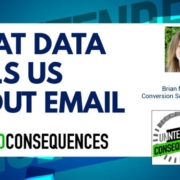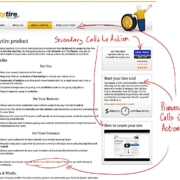Using Notifications and Confirmations to Engage and Convert
Six mistakes that you can turn into opportunities
In a post on the American Marketing Association blog, I’ve presented my list of best practices for notification and clarification emails. These are golden opportunities to continue the conversation with an engaged prospect and move them closer to becoming a customer or a user of what you offer.
Notifications are sent when someone requests something from your web site. They can be triggered by a download, registration, demo, webinar, signup, contact inquiry, service request, or customer support call.
Each one should move your conversation with this person further along.
We see these as simply informational, but they should also provide additional value.
The Top 6 Mistakes
Mistake #1: Not sending notifications and confirmations
What are you doing to continue a conversation with your trial prospects, new buyers and new Web leads? Do not miss a chance to experience amazing open, read and response rates.
Transactional email has more priority than promotional or educational email. The confirmation, verification and follow-up messages relate to a specific transaction initiated by the receiver. They pay more attention. Plus, these emails can be sent within 24 hours of the transaction, the time that a prospect is hottest.
Mistake #2: Not sending enough notifications
Consider this scenario: A visitor to your site completes a registration form and downloads your white paper. They receive a verification email and click to verify their email address. SCORE! What additional notifications and confirmations could be sent immediately without pestering them?
Get creative. What else could you be sending that is specifically tied to this otherwise innocuous lead generating transaction?
Mistake #3: Not helping new users get started
As we’ve begun to understand the complete marketing cycle, we’ve extended the standard marketing funnel — Awareness, Consideration and Action — to include a post purchase process: Use, Opinion and Talk. The implication here is that you have to convert a purchaser to a user.
Mistake #4: Not tracking the performance of your notification and confirmation e-mails
Notification and confirmation e-mails are measured the same way a newsletter or promotional e-mail is: deliverability, open rates, and click-through rates. However, your notifications are usually not sent via an email service provider (ESP). Most notification email will be sent by the IT department.
Consider taking your notification and confirmation emails away from IT and using your ESP to give you the metrics you need.
Mistake #5: Not sending quickly
Send early and send often.
These emails should be automated. Confirmation and verification emails should arrive within minutes. Follow up e-mail should arrive within 24 hours. After that, the transaction begins to take on a “so yesterday” feeling for the recipient.
Mistake #6: Not offering that next piece of information
Each transaction is just a step in the journey of your new customer or new lead. The new user needs to know how to best use their purchase. The new lead needs the next piece of information that will help them feel comfortable buying from you.
Show them their next step.
Originally published in the AMA blog.














